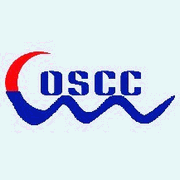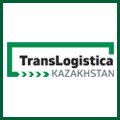CHINA Shipping Container Lines widened its first quarter year-on-year loss tenfold to CNY1.5 billion (US$229 million), compared with the CNY146.1 million the country's second biggest carrier lost last year.
First quarter revenue fell 1.1 per cent to CNY6.4 billion year on year while operating costs increased 15 per cent to CYN7.7 billion, the company revealed in a statement to the Hong Kong stock exchange.
Shipping Gazette - Daily Shipping News
JAPAN's third largest carrier "K" Line has announced its fiscal year 2011 results ending March 31, 2012 suffering a net loss of US$503 million against $380 million profit in 2010 due to considerable loss recorded in its container shipping business.
The world's 14th carrier experienced an operating loss of $494 million drawn on 1.3 per cent decrease in operating revenues to $11.8 billion in fiscal year 2011. Earlier, "K" Line had reported a $173 million operating loss for the last quarter of 2011 from January to March.
In container shipping, "K" Line lost $520 million against a profit of $360 million in fiscal 2010. Container revenues fell 11 per cent to $4.9 million from $5.5 billion in the previous year.
The carrier said the heavy loss was the result of "weak market conditions, a strong yen and high fuel oil prices." Last fiscal year saw the Japanese economy recover from the downturn caused by March earthquake and tsunami, but the persistent appreciation of the yen and the floods in Thailand caused a further slowdown.
It said the container market was soft and "sluggish" last year due to declining cargo shipments in the US and Europe and an increase in container capacity.
"K" Line said uncertainty remains, but the upside is that demand is expected to increase. So it expected earnings to see a "substantial improvement" this fiscal year, attributable to recent freight rate increases, cost-cutting and slow-steaming.
Shipping Gazette - Daily Shipping News
MELBOURNE container terminals will be expanded to accommodate expected trade growth, announced by Victoria state Premier Ted Baillieu.
The project involves the construction of a new container terminal at Webb Dock and the improvement and modernisation of infrastructure and facilities at Melbourne's existing container terminals on the Swanson Dock under the A$1.2 billion (US$1.24 billion) redevelopment plan.
In its 2010-11 fiscal year, Melbourne handled a record 2.5 million TEU. Premier Bailleu said the work was needed to ensure that the port was able to upgrade efficiency as a gateway port.
"With container movements in and out of Melbourne increasing in excess of six per cent every year and tipped to reach eight million TEU by 2035, this announcement is an important part of the coalition government's plan to provide the infrastructure required to meet demand," the premier said.
Shipping Gazette - Daily Shipping News
SPAIN's Port of Barcelona has posted an operating profit of EUR60 million (US$79.5 million), drawn on revenues of EUR158 million, down six per cent on the previous year.
Container throughput increased four per cent to more than two million TEU and overall cargo volume came in at 44.2 million tonnes, up 0.4 per cent.
Exports rose 14 per cent to 511,096 TEU, with China, the UAE and Turkey, the principal destinations for increasing volumes of goods manufactured in Barcelona's hinterland.
In the automotive sector the terminal handled more than 630,000 cars, an increase of 14 per cent on the previous year, with more than half being exported.
Last year, the port invested EUR105.4 million, mainly on new infrastructure, such as the construction of Prat Wharf, the South Quay enlargement and the new border inspection post, as well as repairing and improving breakwaters and quays.
In 2012, the port expects to invest EUR193 million on infrastructure and initiatives to boost the domestic market, reported London's International Freighting Weekly. "We are creating a major port that will generate employment and become the driving force of Catalonia's economy," said port president Sixte Cambra.
Shipping Gazette - Daily Shipping News
GREEK Costamare Inc has announced that it will scrap two 1984-built ships and purchase two 1998-built vessels as replacements for their charters.
Costamare will purchase the 1998-built, 3,842-TEU Bunga Raya Dua (to be renamed Koroni) and the 1998-built, 3,842-TEU Bunga Raya Satu (to be renamed Kyparissia) and scrap the 1984-built, 2,922-TEU Gifted and the 1984-built, 2,922-TEU Genius I, reports World Maritime News.
The total acquisition cost for the two vessels is US$24.9 million and will be partly funded with debt drawn from a currently committed and undrawn credit facility. The total sale price for the Gifted and Genius I is $12.3 million.
The newly acquired vessels are expected to be delivered in May. At the same time, the Costamare has agreed to extend these two charters for 18 months, from November at an average daily rate of $11,150.
"We continue to deliver on our fleet renewal programme by taking advantage of attractive steel prices and second-hand, charter-free ship values," said Costamare chief financial officer Gregory Zikos.
"With an incremental cost of only $6.3 million per vessel, we are extending the useful life of older assets by substituting them for vessels that are 14 years younger, larger and with better specifications. The transaction enhances our earnings potential and re-chartering upside. We expect to realise book gains of $4.4 million in aggregate from the above disposals."
Shipping Gazette - Daily Shipping News
THE UAE's Abu Dhabi Terminals (ADT) has posted 10 per cent growth in first quarter container volume year on year to 177,147 TEU due to continued growth in overall cargo and passenger handling Mina Zayed port, reports Emirates News Agency.
General and bulk cargo volume increased 16 per cent to 1,452,630 tons with ro-ro rising 20 per cent to 18,770 vehicles. Cruise volume was up eight per cent to 107,273 passengers.
"It is rewarding to see the continued growth in cargo handling in Abu Dhabi. This is a good indication that Abu Dhabi's population and economy are developing favourably and that the Abu Dhabi Economic Vision 2030 is on track," said ADT chief executive Martijn Van de Linde.
"The growth also reaffirms that the decision to develop the new container terminal at Khalifa Port was right, and we are excited about opening the region's first semi-automated facility in the fourth quarter of this year," Mr Van de Linde said.
Shipping Gazette - Daily Shipping News
NORTH China's Shaanxi province has planned to increase its highway mileage to 160,000 kilometers by 2015 with a density of 77.7 kilometre per 100 square kilometres, reports Xinhua.
The province aims to build a strong transport infrastructures in the coming years. It will increase highway lengths to more than 4,000 kilometres this year and to 5,000 kilometres by 2015. The province will make all its counties and cities connected to key cities by highways, and villages between each other linked by paved roads in the next four years.
Shipping Gazette - Daily Shipping News
INDONESIA has banned US beef imports because of mad cow disease in one American dairy cow and will not lift the ban until it is assured that the disease has been wiped out, said vice agriculture minister Rusman Heriawan.
"We will lift the ban as soon as the US can assure us its dairy cows are free of mad cow disease. It could be one month or one year. It depends on how long it takes to resolve this case," he told a press briefing.
US Trade Representative Ron Kirk told The Associated Press: "There is no reason to be concerned about the consumption of US beef. We would expect that Indonesia would quickly reopen its market. It [banning] must be done in the context of standards established by the World Health Organisation."
The latest US case of bovine spongiform encephalopathy was discovered in a dairy cow scheduled to be slaughtered at a rending plant, where the animal remains are not used as food.
Indonesia is a small market for US beef. In 2011, it purchased beef worth US$879,000. In the first two months of 2012, sales of US beef to Indonesia totalled just $21,000.
Said US Meat Export Federation president Philip Seng: "US beef is safe. We are reaching out to contacts around the world to reassure them that this finding is an indication that the system to safeguard the wholesomeness and safety of US beef is working."
Shipping Gazette - Daily Shipping News
US EXPRESS delivery company United Parcel Service (UPS) has posted 6.3 per cent first quarter profit increase to US$1.6 billion year on year, drawn on revenues of $13.1 billion, up 3.9 per cent.
Domestic revenue led the way with a 6.1 per cent increase to $8 billion. Foreign revenue was up 2.3 per cent to $3 billion as exports from Europe, Asia and Mexico increased.
The 4.3 per cent increase in delivered packages to one billion was attributed to rapid e-commerce growth and demand for lightweight shipping.
Operating profit in the company's supply chain and freight segment went up 19 per cent to $166 million, but revenue increased marginally because of excess capacity.
UPS has acquired TNT Express, Europe's second-largest package delivery company, for $6.8 billion, which stands to create the world's biggest logistics group with more than $60 billion annual revenue.
Shipping Gazette - Daily Shipping News
SINGAPORE-incorporated Perma Shipping Line has implemented Quantum's BSO state-of-the-art Qi-Liner analytics product for its liner and NVOCC business.
The system is built on Quantum's business intelligence engine Qlikview, and contains 13 dashboards, balanced scorecards, management reports, 2000 analytics, 200 reports and 10 different simulations.
The Qi-Liner integrates to the client's operating system through a simple mapping process over four weeks and thereafter provides immediate strategic and tactical results.
Perma managing director Ali Meghami stated that they have been extremely interested in the product. He felt that its induction as a strategic management, planning and efficiency tool will give Perma a significant competitive advantage.
Quantum CEO Arjun Vikram-Singh thanked Perma for recognising the innovation and benefits that the system provided. He believed that the product will show dramatic returns for Perma in their commercial management, organisational and asset efficiency, as well as financial aspects.
Shipping Gazette - Daily Shipping News
THE Israel Port Company has started dredging Haifa Port's entry channel to 17.5 metres, which when completed will allow container vessels with a capacity of 10,000 TEU to enter the port, reports Israel's shipping newsite Port2Port.
Work started after authorisation from Israel's Ministry for Environmental Protection. The aim now is to complete the project within a few months to allow vessels to enter and leave the port's basin via Haifa Bay.
According to the terms of the permit and the demands of the environment department, the Haifa Port Company is required to monitor the quality of material excavated from the entrance channel and pumped back into the sea.
For the first time in Haifa Port's history, widening of the entrance channel will allow large containerships to dock at the new Carmel terminal.
Said Israel Port Company CEO Shlomo Briemann: "The permit was given on an understanding that combines considerations for protection of the environment and the benefits derived to the economy of Haifa and the northern part of Israel."
The first stage involved dredging sand from the sea bed that will take several weeks. When finished, the depth of the entrance channel will be 16 metres and will allow 8,000-TEU ships to enter the port. The second stage involves dredging the channel to 17.5 metres.
Shipping Gazette - Daily Shipping News
HONG KONG's Kerry Logistics, a global logistics provider, has announced it has secured a major contract with Woolworths Limited in South Australia to provide landside logistics for general merchandise and supermarket destinations.
Services comprise collection and de-stuffing of containers, cross docking and pallet storage for Woolworths distribution centre network throughout the southern Australia region.
"We are delighted to have the opportunity to build a long-term relationship with Woolworths," said Kerry's Australia chief Ian Trimboli.
Woolworths is the largest retail company in Australia and New Zealand by market capitalisation, with 191,000 employees in Australia and New Zealand and annual revenue of US$54 billion.
Shipping Gazette - Daily Shipping News
SOUTH AFRICA's Barloworld Supply Chain Software, a supply chain planning company, is expanding service offerings in France where it has appointed Gilles Alais as country manager.
Barloworld Supply Chain Software (Barloworld SCS) offers supply chain software options to assist planning, strategy and inventory optimisation, supported by expert customer support.
"We have lots of different clients in different markets all over the world," said Barloworld SCS managing director Kevin Boake. "We strive to provide service and support, but it can be challenging from the UK. It is important to have a local presence."
With more than 18 years of experience within international software ERP (enterprise resource planning) and APS (advance planning and scheduling) vendors, Mr Alais has been selected as an experienced business manager to lead the Barloworld SCS in France.
Said Mr Boake: "We have a strong and experienced business development manager in Gilles. We've seen the importance of a specialist to concentrate on non-multinational business because, while many businesses are global, lots are also national, such as French companies that focus just on France. An experienced local business manager such as Gilles in France is invaluable."
Shipping Gazette - Daily Shipping News
THE Maritime and Port Authority of Singapore (MPA) and the Singapore Maritime Institute (SMI) are offering US$1 million prize to the winner of the Next Generation Container Port (NGCP) Challenge.
The competition, to design a container terminal within stated specifications showing performance, productivity and sustainability, was announced by MPA chief operations officer M Segar at Mandarin Oriental Singapore.
Registration for the international competition is open until July 31. Participants will have to submit their proposals by December 31. Submissions will be evaluated by an international panel, comprising representatives from the Singapore government and the maritime industry, said a statement from organisers.
"It is important for Singapore, as a land-scarce nation, to look for innovative proposals that will allow us to achieve an exponential leap in performance, productivity and sustainability. We believe that this competition will allow us to identify ideas that will not only benefit the Port of Singapore, but the entire container port industry," said Capt Segar.
Participants will be required to consider several operating specifications, such as a handling capacity of at least 20 million TEU as well as 24/7 operations and a 90 per cent berth on arrival for ships. Designs should also be operational within the given land profile and also be environmentally sustainable, said the statement.
The winning proposal will be announced at the next Singapore Maritime Week April 7-12, 2013. In addition to the top prize, MPA and SMI will also set aside S$5 million (US$4.03 million) in R&D grant to develop promising proposals and concepts. Before the winner and commendation awards are announced, shortlisted proposals will also be displayed in a public exhibition.
"As a leading container hub port, it is important for Singapore to continually innovate and leverage on cutting-edge technologies to operate the container ports of the future. The NGCP Challenge serves to support SMI's R&D strategy on R&D for breakthrough applications as well as to develop our thought leadership in port design," said Singapore Maritime Institute executive director Heng Chiang Gnee.
Shipping Gazette - Daily Shipping News
PROFIT fell 86 per cent in the first quarter year on year for Air China and 74 per cent for China Southern Airlines, despite a 7.7 per cent revenue increase for Air China and a 16 per cent sales boost for China Southern, reports the Wall Street Journal.
Lower profits were attributed to high fuel costs, but hedging options are limited for Chinese airlines under restrictions imposed by the State-Owned Assets Supervision and Administration Commission.
Restrictions are due to huge losses incurred by wrong-way hedging in 2008, when all assumed jet fuel prices would rise but they fell instead, forcing hedgers to buy at suddenly inflated prices. While Chinese airlines can still hedge, new rules on the quantity and duration of futures contracts deter many.
Shipping Gazette - Daily Shipping News
The magazine SEA has been published since 1935
International business magazine JŪRA MOPE SEA has been published since 1999
The first magazine in Eurasia in the four languages: English, Chinese, Russian and Lithuanian
|
|




.jpg)






